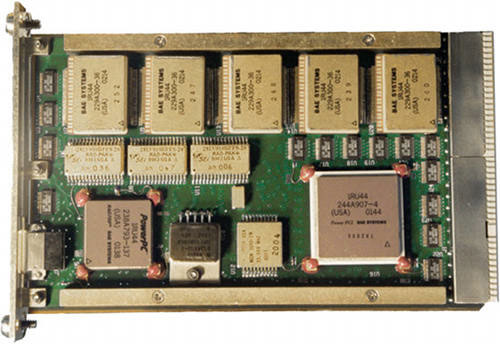
Total Pageviews
Tuesday 5 March 2013
Time Warner Cable's TWC TV app is now streaming on Roku

Engadget Animated: Mary Roach discusses the impact of space travel on the human body

Valve's Steambox prototypes heading to some Steam users in '3 - 4 months'

ChargeCard pocket iPhone charger starts shipping, we go hands- and wallets-on

Curiosity sale del modo seguro
Thanks for the well wishes! I'm out of "safe mode" and expect to resume full operations next week. go.nasa.gov/Vws8Lb
— Curiosity Rover (@MarsCuriosity) March 5, 2013
Un fallo en la memoria flash del ordenador A de Curiosity obligó a los responsables de la misión a activar el ordenador B el pasado 28 de febrero, operación que implica poner al rover en modo seguro.
Esto es como cuando reiniciamos un ordenador personar que está dando problemas: ponerlo en modo seguro carga el mínimo necesario del sistema operativo y programas de a bordo par asegurar el funcionamiento de los sistemas básicos.
De hecho los dos ordenadores de Curiosity, conocidos oficialmente como Rover Compute Element, llevan un procesador RAD 750 cada uno, que no es otra cosa que una versión protegida contra radiación del PowerPC 750.

Los RCE van a 200 MHz, tienen 256 MB de RAM y otros 2 GB de memoria flash para almacenar datos
El RAD 750 es un procesador que ya tiene sus años, pues data de 2001, aunque es más que suficiente para las tareas que tiene que realizar, y debería ser lo suficientemente duro como para aguantar toda la misión de Curiosity y más; en Los microprocesadores de las naves espaciales Daniel Marín les da un repaso a los «cerebros» de los cacharros que enviamos por ahí a recorrer el espacio.
Afortunadamente Curiosity salía del modo seguro ya el sábado, y los responsables de la misión están cargando poco a poco los datos necesarios como por ejemplo la posición del brazo, del mástil, etc, antes de que pueda volver a trabajar, lo que igual no ocurre hasta la semana que viene: Curiosity Rover's Recovery on Track .
Por otro lado, y mientras lo ponen de nuevo en funcionamiento, están realizando las pruebas pertinentes para poder volver a activar el ordenador A.
La hipótesis de trabajo es que un rayo cósmico cambió una posición de memoria dejándola ilegible, lo que provocó el error, y ahora hay que determinar si el fallo es permanente o no. Si no lo es con un formateo de la memoria se arreglaría el problema; si lo es bastaría con evitar usar en el futuro la o las posiciones de memoria afectadas, algo que no sería la primera vez que hubiera que hacer con un ordenador a bordo de una sonda espacial.
via Microsiervos http://www.microsiervos.com/archivo/ciencia/curiosity-sale-del-modo-seguro.html
Emblaze Mobile's ex-CEO: First Else was eventually ready but the market had changed

UIU Android launcher targets non-techie users with easy cloud management (video)

Home Cleaning Service Pathjoy Becomes Homejoy, Raises $1.7M From Andreessen Horowitz And Others

Pathjoy, a Y Combinator-incubated startup that makes it easy and affordable to have your home cleaned, is announcing that it has raised $1.7 million in seed funding. It’s taking on a new name that sounds like a better fit for its mission — goodbye Pathjoy, hello Homejoy.
The funding came from Andreessen Horowitz, First Round Capital, Mike Hirshland/Resolute.VC, Max Levchin, Paul Buchheit, Saba Software CEO Bobby Yazdani, and Pejman Nozad. CEO and co-founder Adora Cheung told me that the investors seemed to be particularly excited about connecting unemployed and underemployed people with work, and about a service that’s spreading thanks to word of mouth.
The company offers a simple web interface for booking cleanings. It charges $20 an hour, and before the appointment, you can view the profile of the person who’s going to be cleaning your home. (Cleaners are also background checked and rated by customers.) Cheung previously said that the company has done a lot of work behind the scenes to take some of the inefficiencies out of the system, so that it can offer cleanings that are significantly cheaper than most other services.
I’ve actually become a big fan of the service myself, and I’ve used it several times since I covered the company in October. (I converted my roommate too — the last time our apartment started looking a little scruffy, he was the first one to suggest going to Pathjoy again.) It takes only a few clicks to make an appointment, and I was also impressed by the cleaners.
On the other hand, I’ve never actually paid someone to clean my apartment before, so I don’t have much to compare it with. After the initial coverage, other people seemed a little skeptical, basically asking: Really? You just built a website for a cleaning service?
When I asked Cheung today if people are misunderstanding the company, she responded, “I’m less worried about whether we’re a tech startup. We’re certainly not building a search engine, but we are using technology to make things more convenient and much simpler.” (It’s also worth noting that Exec, which started out as more of a general assistant/errand service, has been doing more to create unique interfaces and workforces for different services, particularly cleaning.)
One of the things that Cheung highlighted last time we spoke was the process that the company has developed for moving quickly into a city, recruiting cleaners, and finding demand. In fact, Homejoy is now available in every major West Coast city (specifically San Francisco, San Jose, San Diego, Seattle, and Los Angeles), and it’s launching this week in New York.
via TechCrunch » Startups http://feedproxy.google.com/~r/techcrunch/startups/~3/Dbqo5x5A8Mc/
Cómo se crearon los fotomontajes del Gran Cañón del Colorado para Google Street View

Google está utilizando una variante de baja tecnología de su método de creación de imágenes para Street View para añadir las fotos inmersivas de lugares como estaciones de esquí, estadios o lugares turísticos. En Trend It Up –el blog de Sony en que colaboramos semanalmente– he preparado una pequeña anotación sobre cómo fotografiaron el Gran Cañón en Arizona .
En la dura tarea los técnicos tuvieron que recorrer a pie más de 120 kilómetros de senderos y «caminos de cabras» con unas incómodas mochilas y ordenadores portátiles, el receptor GPS, 15 objetivos fotográficos y varias baterías a sus espaldas.
via Microsiervos http://www.microsiervos.com/archivo/internet/gran-canon-street-view.html
China Bemoans Google's Control Over Smartphone Market

Editorial: Countering ID theft requires better awareness campaigns

Google's Picasa URL now redirecting to Google+ photo albums

Apple starts offering paid iBookstore content in Japan

Coby goes nuts with the Google-certified tablets, we go hands-on

Cómo encontrar sin problemas el coche perdido en un párking

Este artículo se publicó originalmente en Sin vuelta de hoja, un blog de MásMóvil donde colaboramos semanalmente con el objetivo de contar cosas sensatas y relajantes relacionadas con la tecnología y la ciencia.
Aquí van dos originales enfoques para que aquellos que suelen olvidar en qué plaza de aparcamiento dejaron el coche al llegar puedan solucionar este problema típico de los gigantescos parkings de las grandes superficies y los mega-centros comerciales:
La solución tecnológica – Se han inventado hasta aplicaciones para ayudar en situaciones así: con Car Finder [iOS] basta marcar la posición al llegar (¡clic!) y a la vuelta el software utilizará la señal GPS y la brújula para superponer a través de las imágenes reales de la cámara de fotos indicaciones en forma de flechas que indican hacia dónde hay que dirigirse. El sistema no está mal, aunque la precisión o velocidad del GPS puede no ser suficiente –especialmente si el parking es cerrado– y los más despistados quizá hasta olviden abrir el programa al llegar al parking.
La solución de baja tecnología – Esta es mi favorita de todos los tiempos por muchas razones: funciona casi siempre, no requiere de cacharritos de ningún tipo, parece un superpoder, se asemeja a una leyenda urbana y de paso sirve para asombrar a los amigos. Consiste básicamente en aprovechar la cabeza como amplificador de antena del mando a distancia. La forma de hacerlo es apoyar el mando por debajo de la barbilla y entonces pulsar el botón: «mágicamente» la señal alcanzará unos 15 o 30 metros más de lo habitual, lo cual puede ser suficiente para que se vean las luces y se oiga el ¡bip, bip! del vehículo. Hay quien encuentra que la distancia mejora si además se abre la boca (!) Compruébalo la próxima vez que estés en un parking con el coche a la vista, desde diversas distancias.
Los que entienden de ingeniería aseguran que no se trata de una leyenda urbana: el efecto, que es más que apreciable, se produce porque la cavidad de la cabeza actúa como antena: el efecto es similar al que producía nuestro cuerpo –haciendo las veces de «antena» en su totalidad– cuando tocábamos con la mano las viejas antenas de radio o televisión. La cabeza, además, está llena de líquidos, y su forma de cavidad hueca dicen que ayuda a aumentar el efecto. Aunque la amplificación que se logre no sea una barbaridad, puede servir para salir de un apuro si el coche responde a la señal del mando.
Ambos sistemas tienen algo en común muy interesante: la cara de tonto que uno pone cuando está haciendo clic con el mando debajo de la boca, o dando vueltas sobre uno mismo con el móvil a la altura de los ojos. Pero bueno, ¡la vida del optimizador de la tecnología es dura, no hay que tener miedo al ridículo!
{Foto: January Sales (CC) John Spooner @ Flickr}
via Microsiervos http://www.microsiervos.com/archivo/mundoreal/encontrar-coche-parking.html
Attention Pet Owners: You Need These 3 Apps

The Agony and the Ecstasy of the Chromebook Pixel

Bloomberg: Verizon seeking to end Vodafone partnership through merger or buyout

LG Optimus G Pro review: a phone that lives up to Note-sized expectations

UK appeals court dismisses Tesla libel suit against Top Gear

Microsoft ViralSearch project visualizes content as it spreads across Twitter

Projector Digitally Aligns Your Billiard Shots in Real Time

Micro 3D Printer Creates Tiny Structures in Seconds

Evernote plans two-factor authentication following last week's hack

German government buys 5,000 BlackBerry Z10s, bucks the BYOD trend

Google Maps App Update Turbocharges Local Search

Nokia Lumia 720 swings by the FCC in high style

Thermaltake and BMW's Level 10 M gaming headset hands-on

Bitcasa Sees 13% Growth In Stored Data, Users In 114 New Countries Since Opening Beta Last Month

Bitcasa, with its infinite and instant cloud storage service, has had to go slow with distribution. After all, any service where you can store an unlimited amount of content and stream it instantly to your device will be in high demand, and Bitcasa has to keep things running smoothly.
And in the company’s defense, “[they] invented something completely new,” said Tony Gauda, founder. “We didn’t have the benefit of using legacy technology or best practices.”
That said, the Disrupt finalist launched its open beta just last month, after launching privately on our stage in September, and has since seen users sign up for the paid product (Infinite Drive) in over 114 countries.
Bitcasa actually has more of an international presence right now than a domestic one, which is why the team is working to stay on pace with its own growth.
“The next step is to continue building the future of storage and accelerate the quickly growing business and team,” said Gauda. “Our first month out the gate we’re an international company with more customers outside the US than we do inside.”
Bitcasa now hosts more than 18 petabytes of user data, which is a jump of 13 percent since the launch of the open beta.
Bitcasa also claims that its conversion rate is “above industry average,” as users are upgrading to the paid service in less than ten days.
On top of being instant and infinite, Bitcasa is also secure in that every piece of content in its servers is encrypted. And all that for just $10 per month.
Bitcasa’s service poses big problems for other storage services like DropBox and Skydrive both in price and storage capabilities. For now, the test is whether or not they can support their growing traction.
Bitcasa launched on the Disrupt stage in September of 2011, and Gauda called it “a huge platform that provided clear market validation.” In the first 24 hours, the service saw over 50,000 signups.
“It was an amazing experience standing on stage and telling people our vision of what the future of storage is,” said Gauda. “Hearing the crowd cheer when we announced that caring about gigabytes is a thing of the past was a humbling experience.”
Disrupt NY is set to be one of the best Disrupts yet, with over 30 companies participating in the Battlefield, and hundreds of startups launching their products in the Startup Alley. But only one will walk away with the Disrupt Cup, joining the likes of Dropbox, GetAround, Yammer, and Mint. But it’s not all about the Battlefield. The three-day conference will include some of the biggest names in tech as speakers and panelists, such as Fred Wilson, Ron Conway, and David Lee. If past Disrupts are any indication, it should be an amazing three days. To get involved in the Hackathon, Startup Alley, Battlefield, or simply attend the event, head over here.
via TechCrunch » Startups http://feedproxy.google.com/~r/techcrunch/startups/~3/J8z1mBrVCto/
'Talking Places' is the Google Glass of tour guides, we go hands-on (video)

Google Maps for iOS gets 1.1 update, adds searchable Google contacts, suggested search categories

Fortune: YouTube music streaming service launching this year

Curiosity Rover Recovering From Computer Glitch
